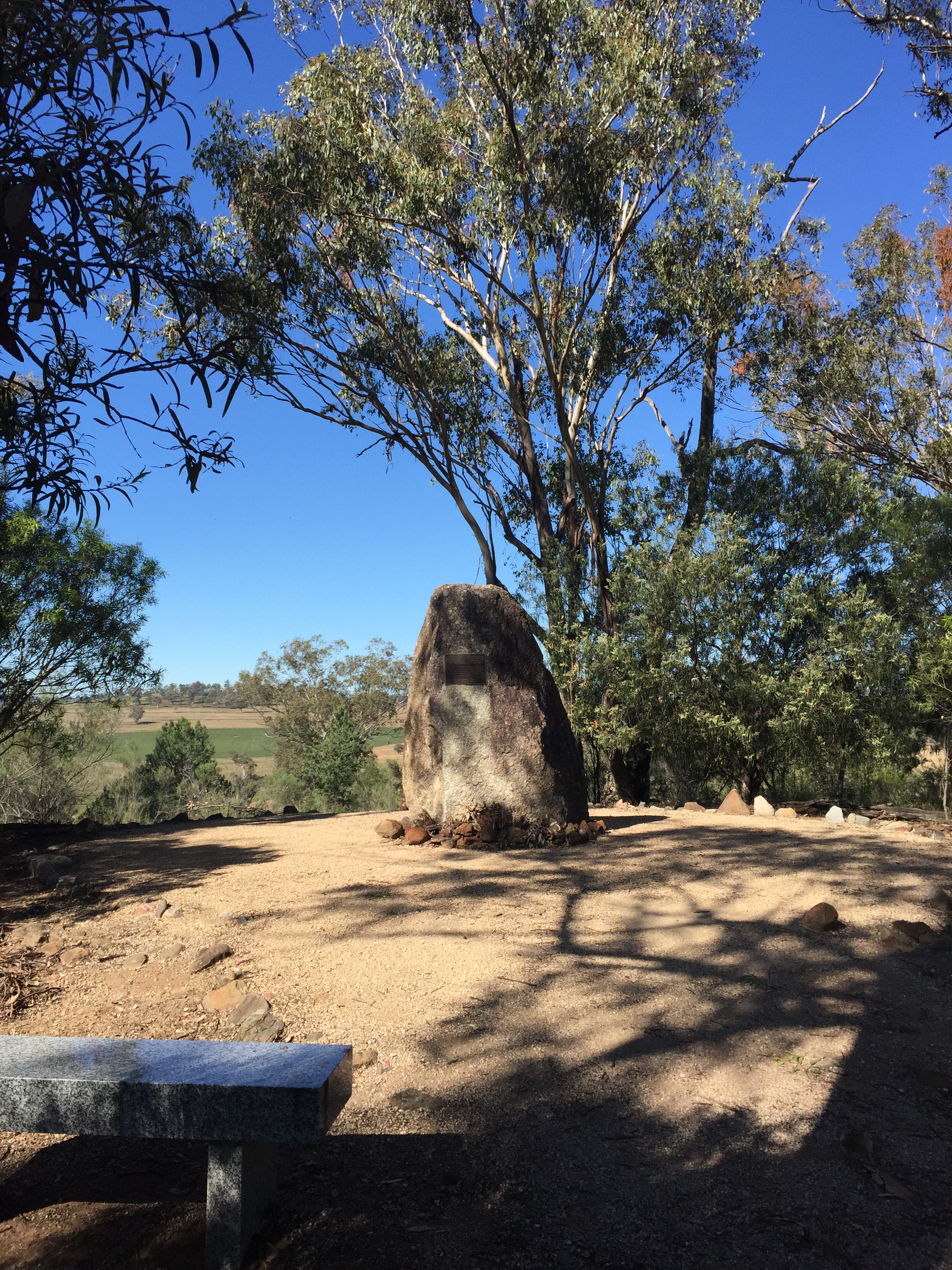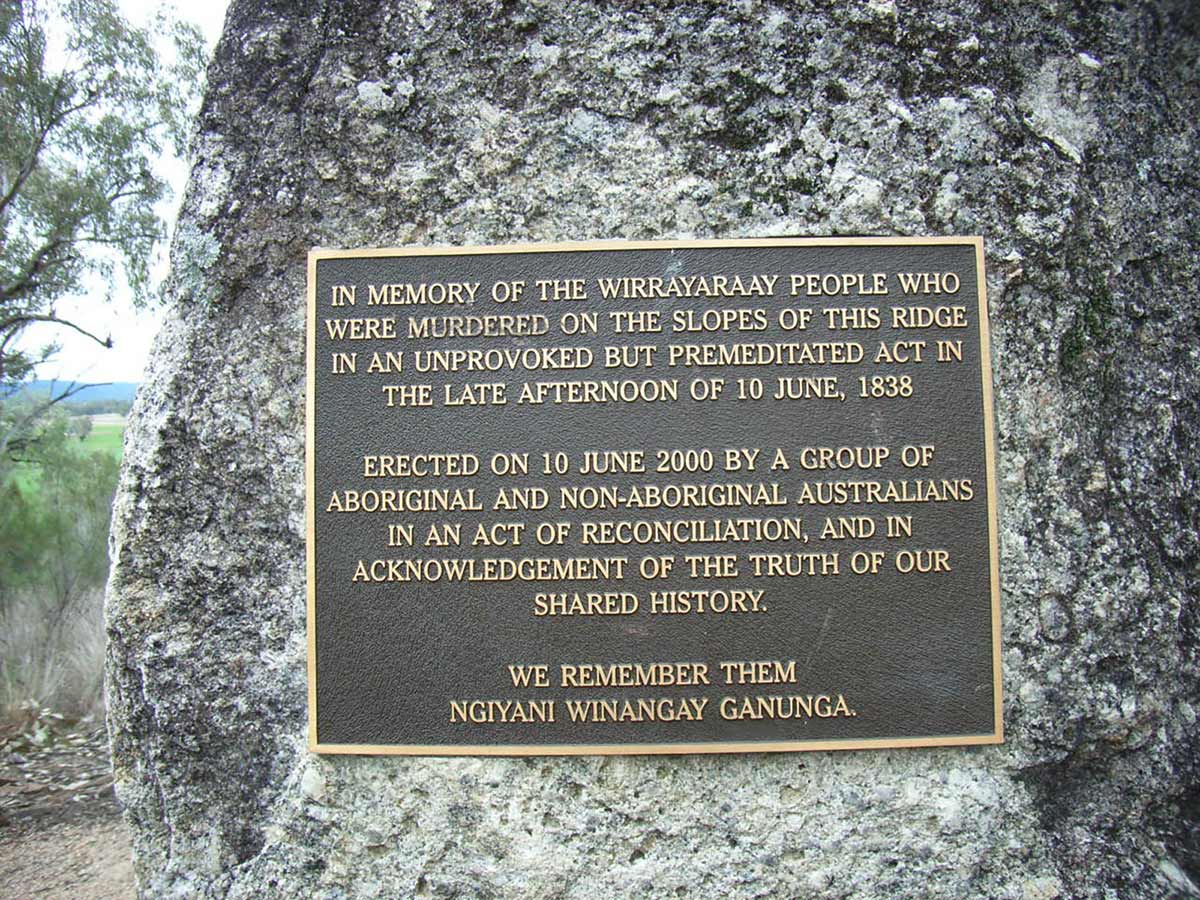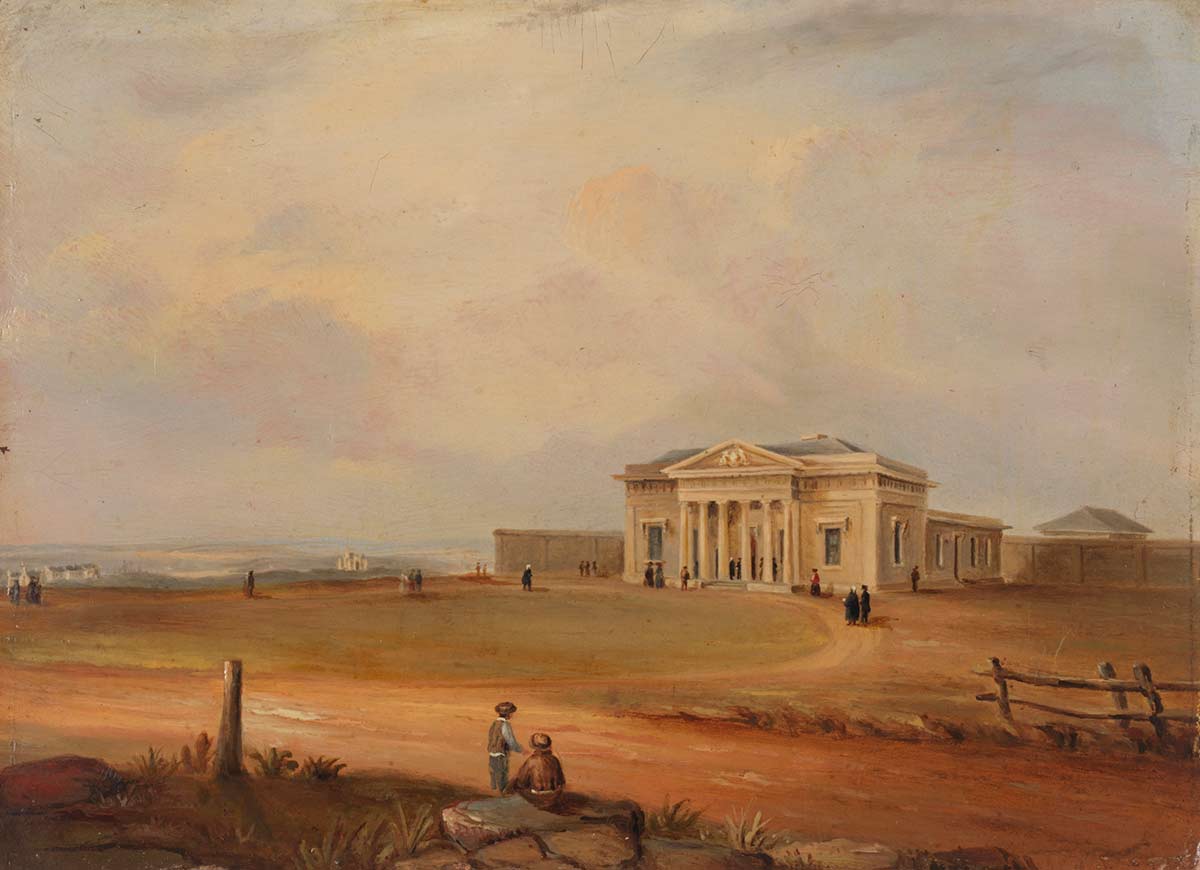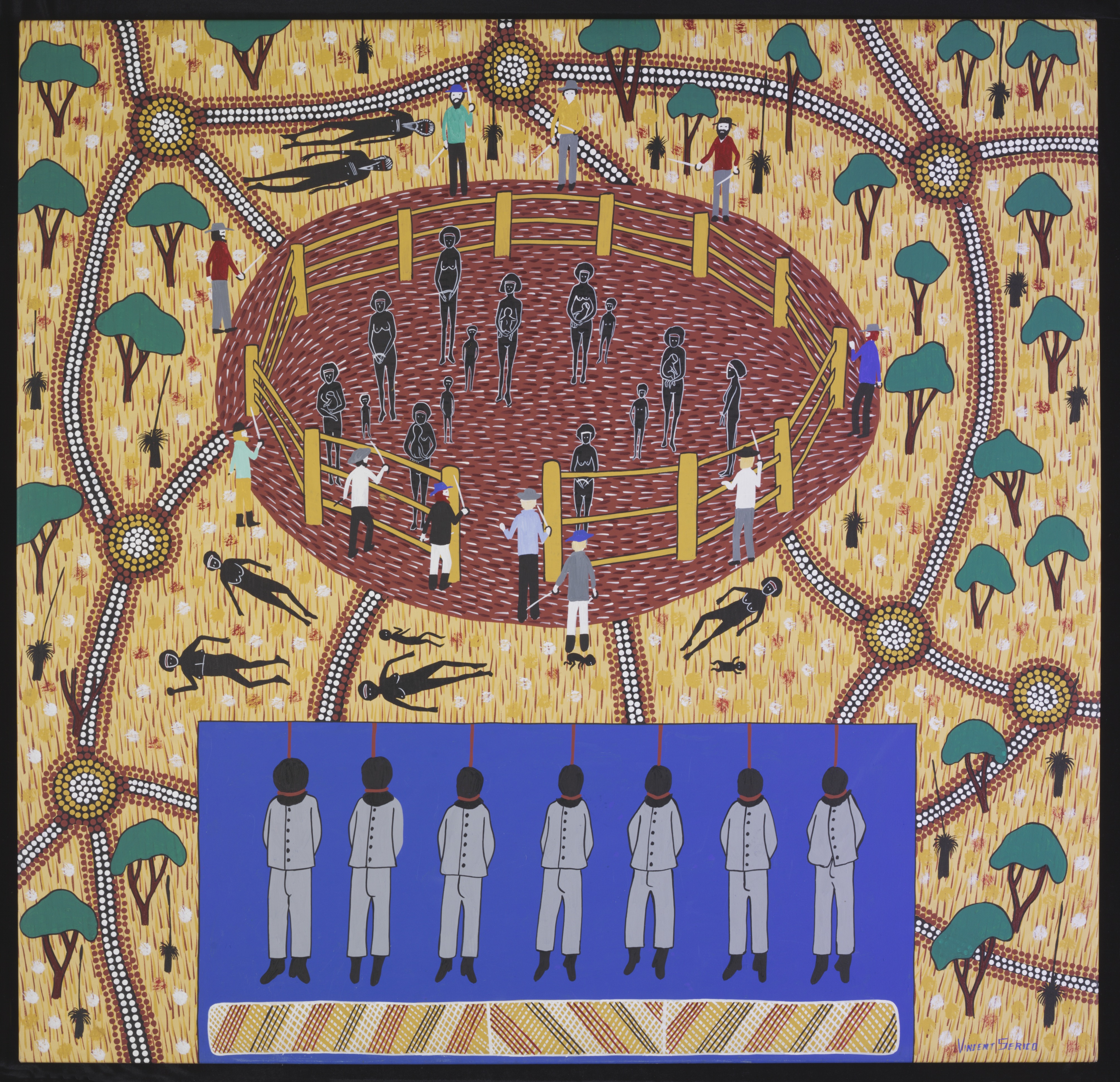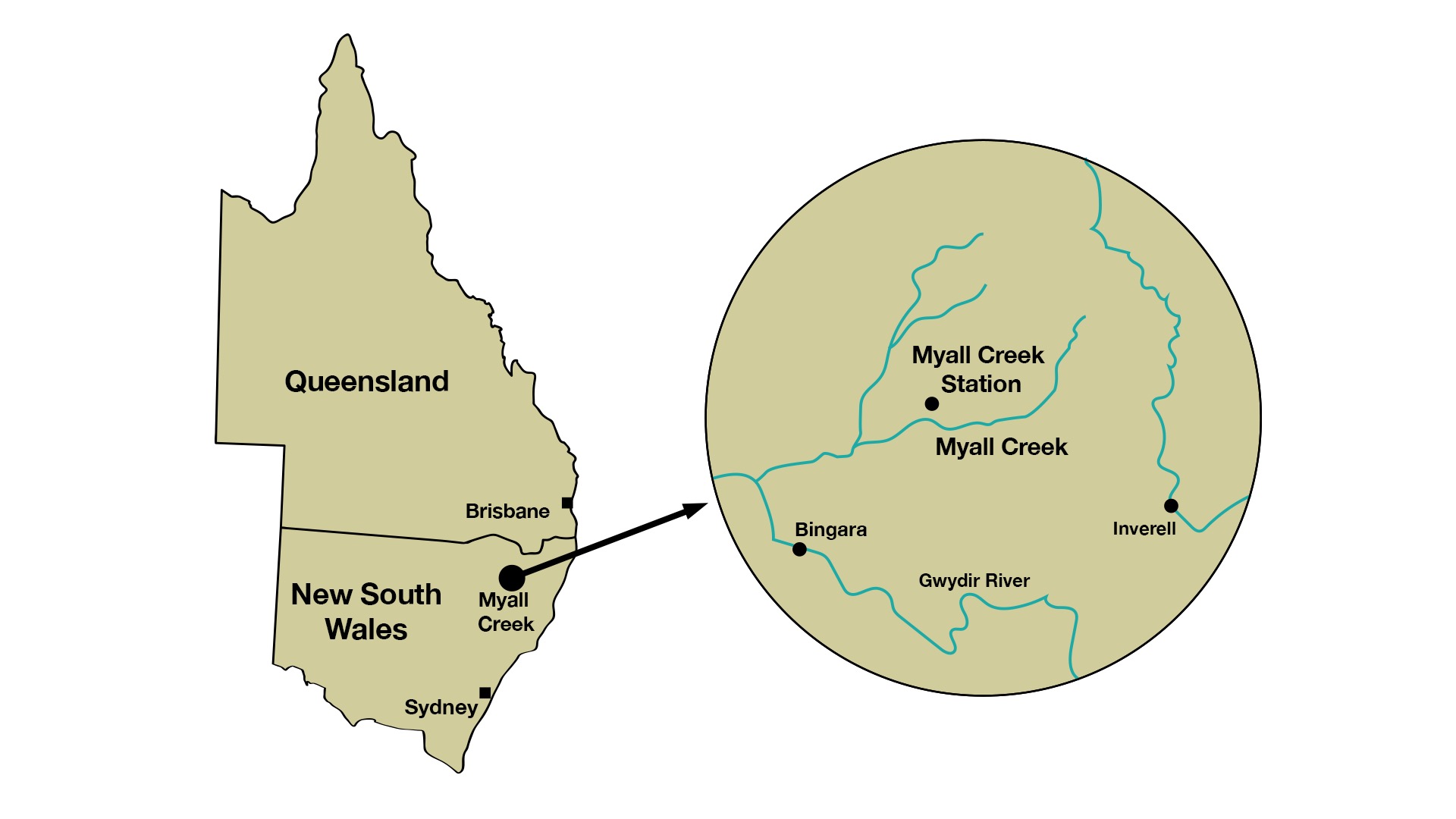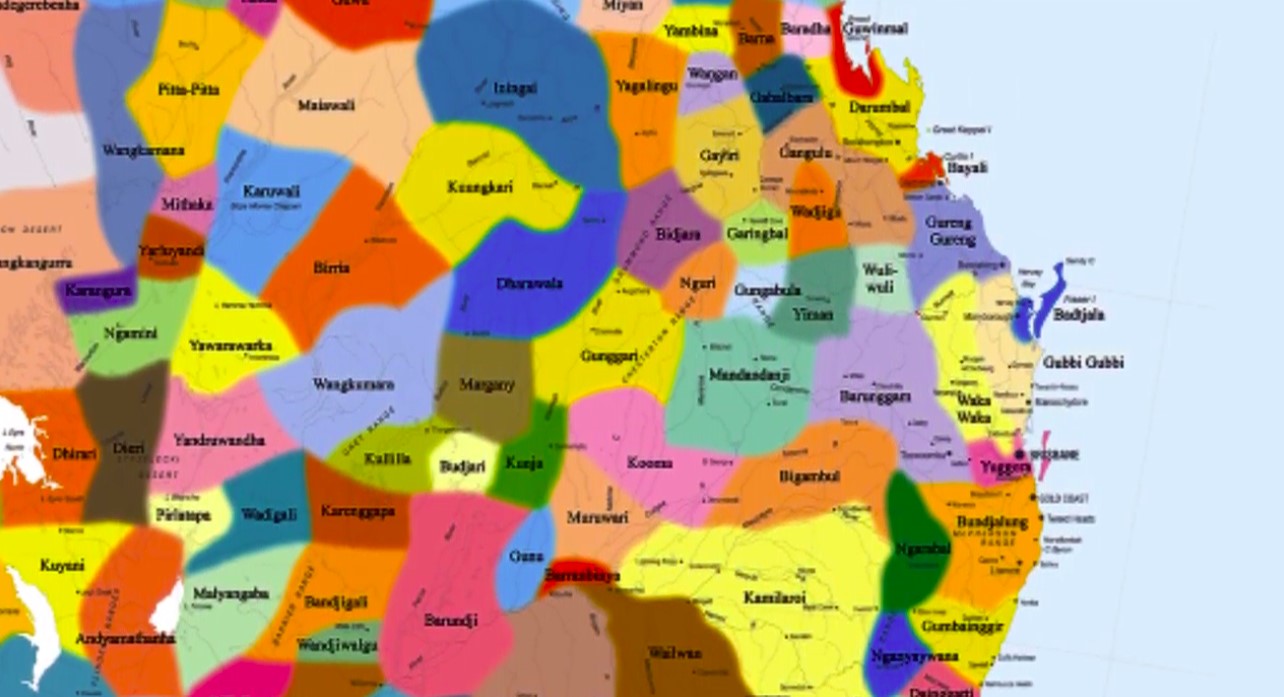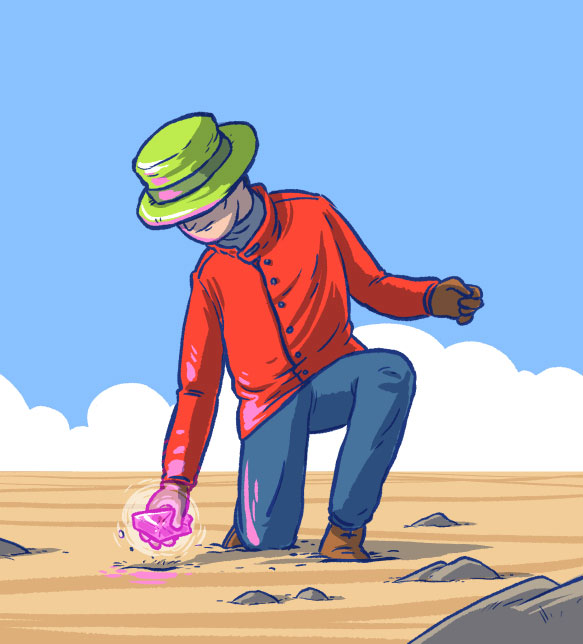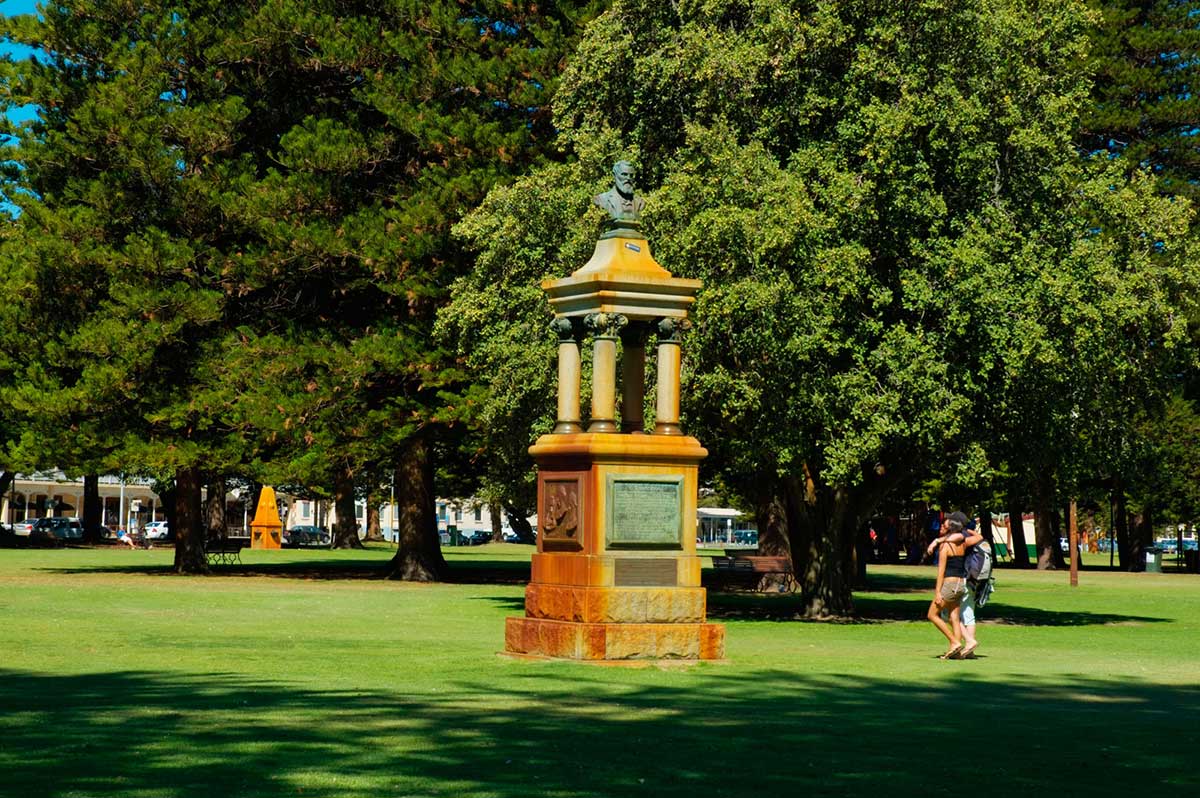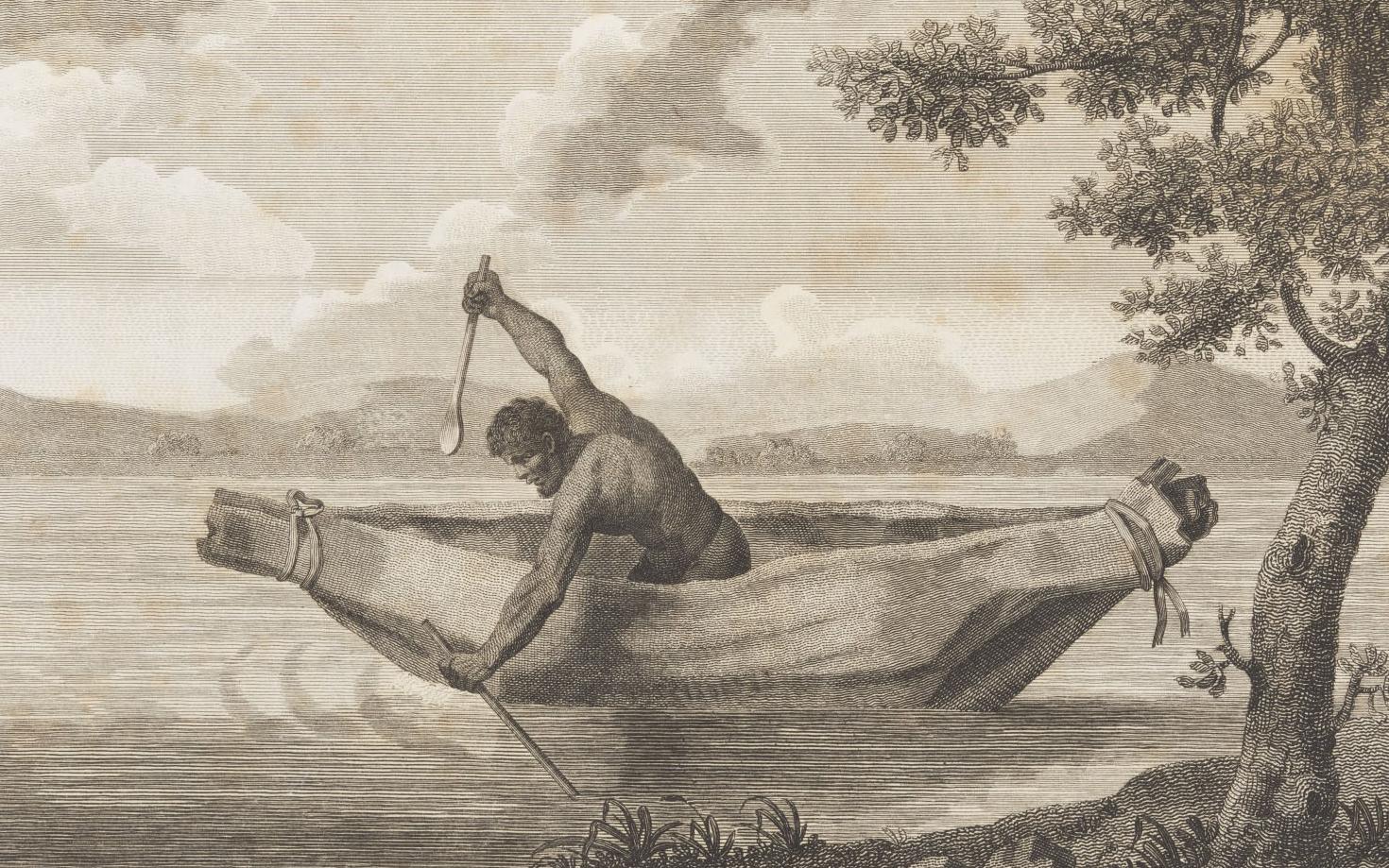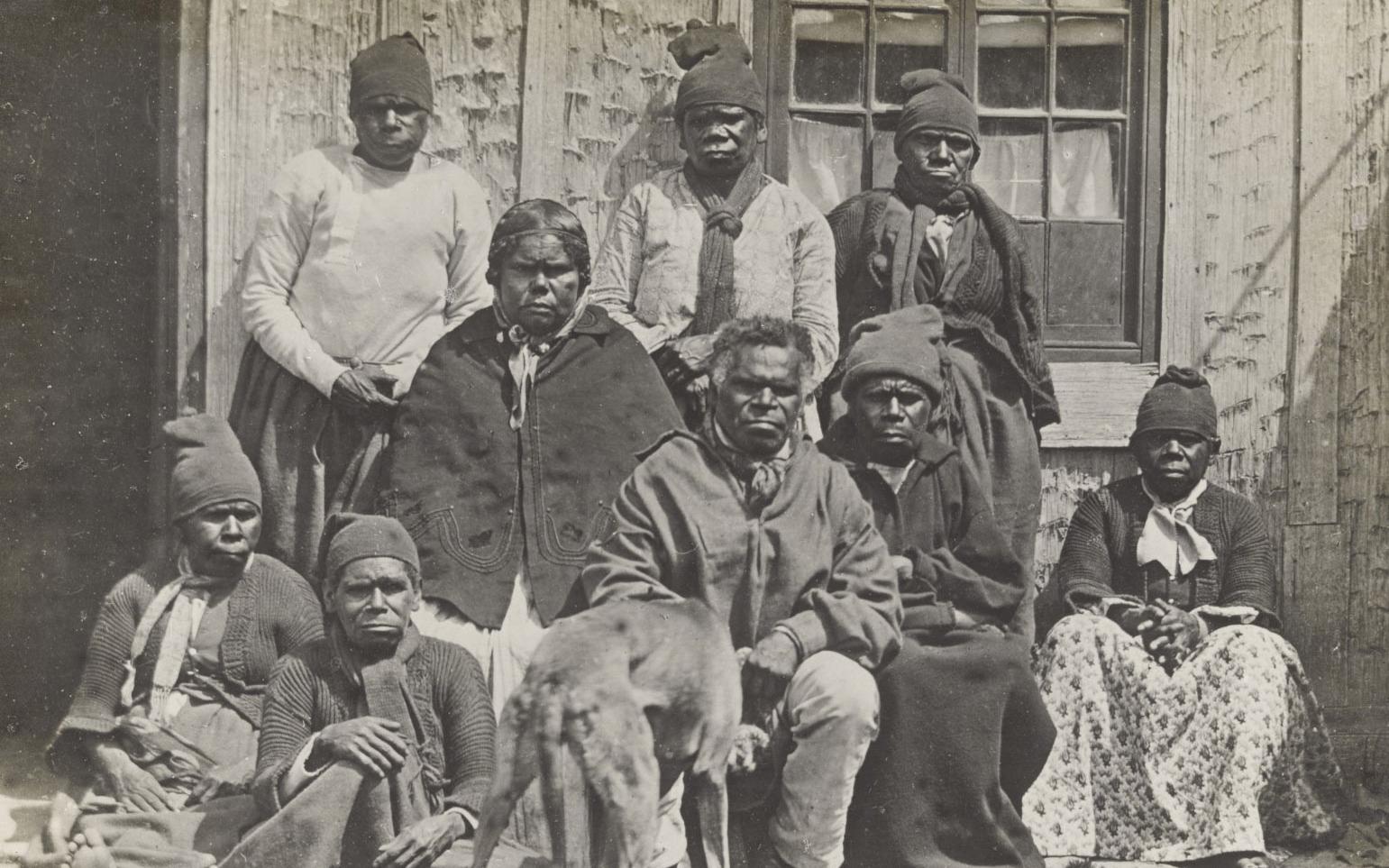When murderers faced the law
1838: Myall Creek massacre and the execution of seven of the perpetrators
When murderers faced the law
1838: Myall Creek massacre and the execution of seven of the perpetrators
WARNING: This page contains some difficult and potentially distressing content.
In a snapshot
In June 1838 at least 28 unarmed First Nations people were massacred by colonists at Myall Creek in New South Wales. In December of the same year seven of those colonists were publicly hanged at Sydney Gaol. They were the first British subjects to be executed for massacring Aboriginal people. It wasn’t the first or last massacre — there were many more — but the trial of the accused men helped to change the way the law was put into practice in Australia.
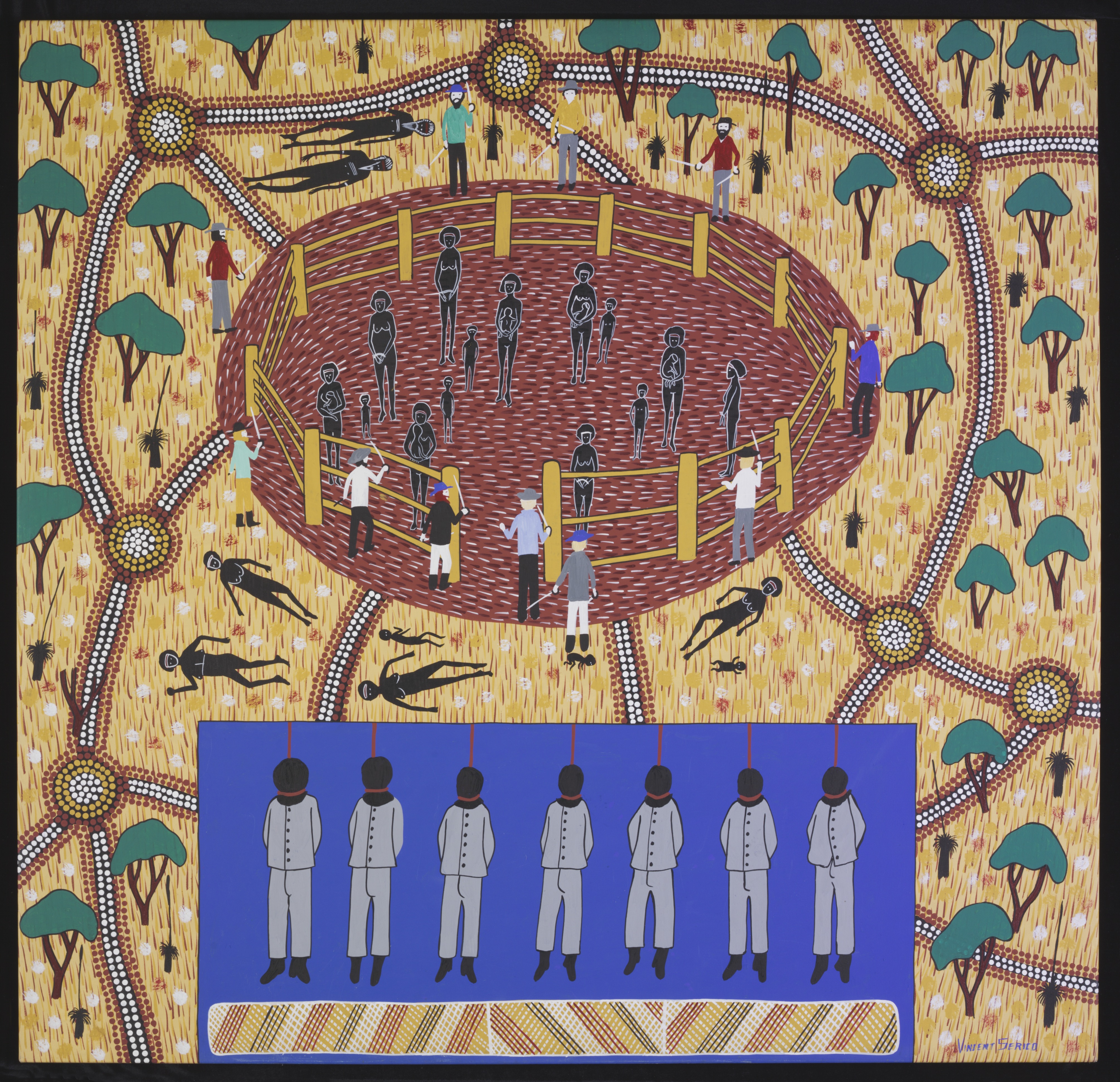
 Can you find out?
Can you find out?
1. Where is Myall Creek?
2. How many people were murdered during the Myall Creek massacre?
3. What happened to the colonists that massacred the Wirrayaraay people?
What was frontier violence?
From the start of European colonisation in 1788, settlers moved onto Aboriginal lands. Europeans wanted to grow food and graze cattle and sheep. This often led to conflict as some Aboriginal people resisted this settlement by burning farms, destroying crops, killing animals and sometimes attacking and killing the colonisers. Many convicts, farmers and stock workers responded by attacking and killing First Nations people. These events often took place a long way from police and courts, so those who committed the crimes were usually not punished.
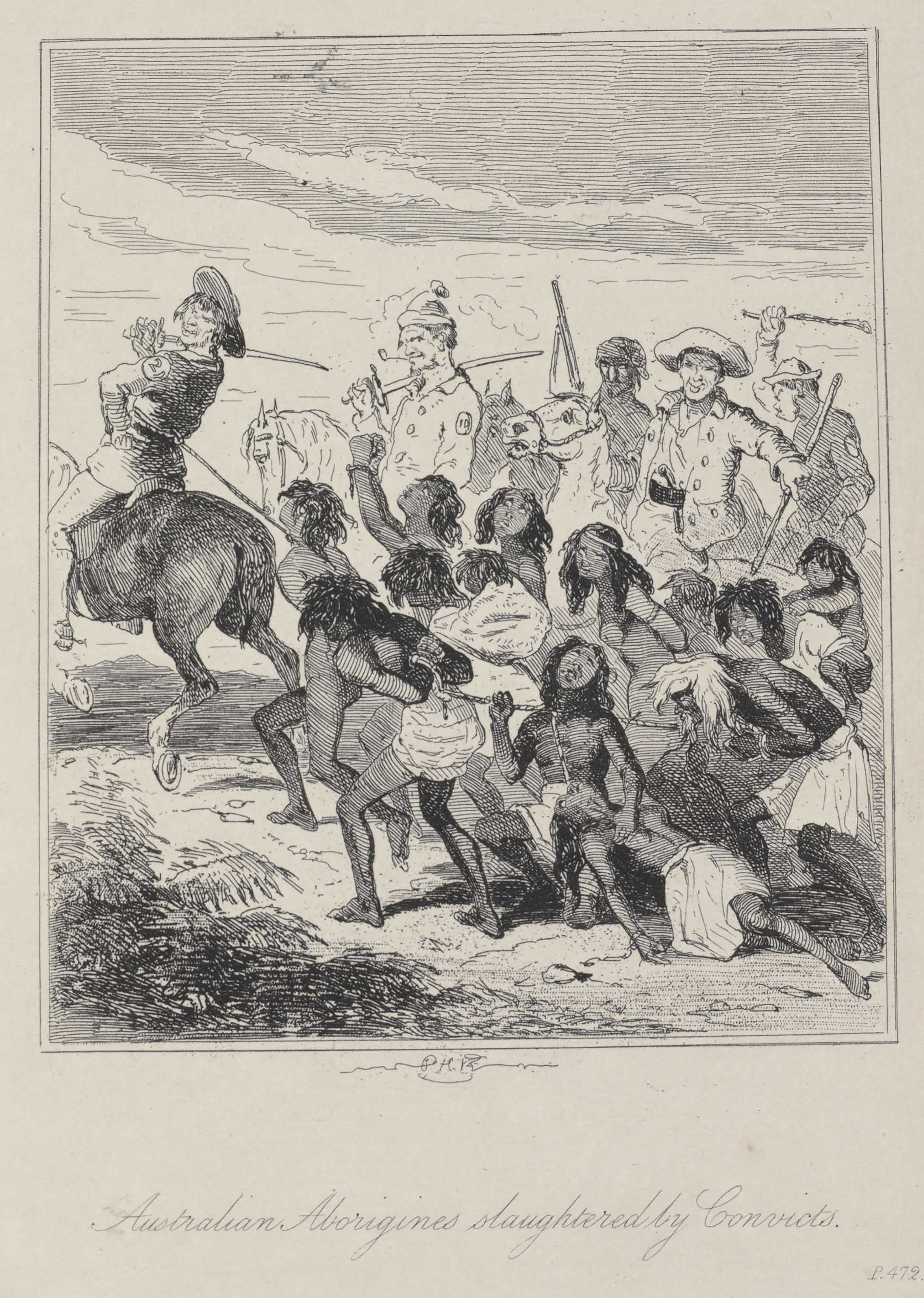
What happened at Myall Creek in 1838?
In May 1838 a group of Wirrayaraay people, a clan of the Gamilaraay nation, camped on a property at Myall Creek Station in north-east New South Wales. The Wirrayaraay men helped stockmen with their work on nearby stations. The stockmen and the Wirrayaraay people spent time together in the evenings, often dancing and singing by the campfire.
Just before sunset on 10 June 1838, while the Wirrayaraay people were preparing for their evening meal, a group of convicts, former convicts and one free settler arrived at the station with guns and other weapons. The group tied up the frightened Wirrayaraay people and led them away from their campsite. They then killed them and burned their bodies. At least 28 people were killed, although the final number of people massacred has never been confirmed.
‘[The trials had] created an extraordinary sensation in the Colony and will be the subject of gossip for many a long day yet.’
What did the Supreme Court decide in this case?
Three local people reported the crime, including the Myall Creek Station manager William Hobbs, who had encouraged the Wirrayaraay men to work at the station. As a result 11 men were arrested and one ran away. The men were put on trial but the jury, which believed the Aboriginal people were a menace to settlers, found them not guilty.
But there was a second trial, and this time seven men were found guilty of murder. The main witness to the crime, Aboriginal man Yintayintin, mysteriously disappeared before the trial of the last four men, so they were never tried. People knew where the twelfth man (the free settler) lived but he was never arrested.
The colonial community of New South Wales was more outraged by the execution of British citizens than they were by the massacre of the Wirrayaraay people. After the seven colonists were executed many colonists felt even more hostile towards First Nations people. Violence continued, but colonists more carefully covered up their crimes to avoid arrest.
Research task
Research another massacre that took place in colonial Australia. How many people were killed? Who were they? Why were they killed? Hint: You might want to use this map from the University of Newcastle
How is the Myall Creek massacre remembered today?
In June 2000 a memorial site was opened at Myall Creek to remember the people who were murdered there. The memorial is important because it reminds people about a terrible massacre. It is also important because it has been set up by Indigenous and non-Indigenous people to recognise our difficult, shared history.
Every year in June hundreds of Indigenous and non-Indigenous people gather at the memorial site to attend an annual memorial service.
‘[The Myall Creek massacre Supreme Court trials were] the first place white man’s justice done some good. Right across Australia, there were massacres. What makes Myall Creek real is that people were hanged, see. That was the difference.’
Read a longer version of this Defining Moment on the National Museum of Australia’s website.
 What did you learn?
What did you learn?
1. Where is Myall Creek?
2. How many people were murdered during the Myall Creek massacre?
3. What happened to the colonists that massacred the Wirrayaraay people?






